- Understanding Tomato Fatness and Its Causes
- Causes of Tomato Fatness:
- Preventing Tomato Fatness:
- Step 1: Proper Watering Techniques for Tomato Plants
- 1.1 Watering Frequency
- 1.2 Watering Methods
- 1.3 Timing
- 1.4 Mulching
- 1.5 Watering Depth
- Step 2: Choosing the Right Fertilizer for Tomato Plants
- Step 3: Pruning and Supporting Tomato Plants
- Why Pruning is Important
- When to Prune Tomato Plants
- How to Prune Tomato Plants
- Supporting Tomato Plants
- Step 4: Managing Pest and Disease Control for Tomato Plants
- Step 5: Harvesting and Storing Tomatoes for Optimal Flavor
- 1. Harvesting:
- 2. Cleaning:
- 3. Storage:
- 4. Ripening Green Tomatoes:
- 5. Enjoying your Tomatoes:
- Expert Tips for Preventing Tomato Fatness and Promoting Growth
- 1. Proper Planting Techniques
- 2. Adequate Spacing
- 3. Proper Watering Techniques
- 4. Nutrient Management
- 5. Pruning and Training
- “Question-Answer”
- What is tomato fatness and why is it a problem?
- What are the symptoms of tomato fatness?
- How can I prevent tomato fatness?
- What is the recommended spacing for tomato plants?
- How often should I prune my tomato plants?
- Are there any specific nutrients that can help prevent tomato fatness?
- “Video” This Method of Trellising Tomatoes is a Game Changer!
Tomatoes are a popular choice for home gardeners, but sometimes tomato bushes can become overweight and unproductive. This can be frustrating for gardeners who are looking forward to a bountiful harvest. However, there are steps you can take to stop tomato fatness and return your bushes to full fruition. In this article, we will share expert tips to help you get your tomato bushes back on track.
Step 1: Pruning is essential when it comes to preventing tomato overgrowth. By removing excess branches and leaves, you can redirect the plant’s energy towards developing healthy fruits. Prune the branches that are overcrowded and have no chance of producing fruit. This will allow air and light to reach the remaining branches, ensuring proper growth and productivity.
Step 2: Supporting your tomato bushes is crucial to prevent them from becoming too heavy and slumping over. Use stakes or cages to provide support and keep the branches upright. This will not only prevent breakage but also allow for better air circulation and sunlight exposure. Make sure the support structure is sturdy enough to hold the weight of the plant and the growing fruits.
Step 3: Proper watering is key to maintaining the health of your tomato bushes. Overwatering can lead to excessive foliage growth but fewer fruits. On the other hand, underwatering can stress the plant and cause stunted growth. Water your tomato bushes deeply and consistently, ensuring the soil is moist but not waterlogged. Mulching around the base of the plant can help regulate soil moisture and prevent evaporation.
Step 4: Fertilize your tomato bushes regularly to provide them with the necessary nutrients for growth and fruit production. Use a balanced fertilizer with a ratio of nitrogen, phosphorus, and potassium suitable for tomatoes. Avoid over-fertilizing, as this can lead to excessive foliage growth and fewer fruits. Follow the instructions on the fertilizer package and apply it according to the recommended dosage.
Step 5: Keep an eye out for pests and diseases that can affect the health of your tomato bushes. Regularly inspect the plants for signs of insect damage or fungal infections. Early detection and intervention can help prevent the spread of pests and diseases. Use organic pest control methods whenever possible and consult a gardening expert if you need assistance in identifying and treating specific issues.
By following these five steps, you can stop tomato fatness and return your bushes to their full potential. With proper pruning, support, watering, fertilizing, and pest control, you can enjoy a productive and delicious tomato harvest.
Understanding Tomato Fatness and Its Causes
Tomato fatness refers to the phenomenon where tomato plants grow excessively without producing many fruits. It is a common issue that many gardeners face when trying to cultivate tomatoes. Understanding the causes of tomato fatness can help gardeners take appropriate measures to prevent it and promote healthy tomato growth.
Causes of Tomato Fatness:
- Overfertilization:
- Insufficient sunlight:
- Inadequate pruning:
- Poor airflow:
- Improper watering:
Excessive use of nitrogen-rich fertilizers can lead to tomato fatness. Nitrogen promotes vegetative growth, leading to lush foliage but fewer fruits. It is essential to use fertilizers in moderation and maintain a proper balance of nutrients.
Tomatoes require full sun exposure to thrive and produce fruits. Lack of sunlight can result in excessive vegetative growth and limited fruit production. Ensure that tomato plants receive at least 6-8 hours of direct sunlight daily.
Pruning is necessary to control the growth of tomato plants and redirect energy towards fruit production. Failure to prune properly can lead to excessive vegetative growth and tomato fatness.
Inadequate airflow around tomato plants can contribute to tomato fatness. Lack of air circulation promotes the development of fungal diseases and can hinder fruit set. Providing proper spacing between plants and removing any obstructions can help improve airflow.
Overwatering or underwatering can both lead to tomato fatness. Inconsistent watering practices can stress the plants and affect fruit production. Water tomato plants regularly and ensure that the soil is well-drained but not soggy.
Preventing Tomato Fatness:
- Use balanced fertilizers with an appropriate nitrogen-phosphorus-potassium (NPK) ratio.
- Ensure that tomato plants receive sufficient sunlight by planting them in a sunny location.
- Prune tomato plants regularly to control growth and promote fruiting.
- Provide adequate spacing between plants to allow for proper airflow.
- Water tomato plants consistently, keeping the soil moist but not waterlogged.
By understanding the causes of tomato fatness and implementing preventive measures, gardeners can promote healthy tomato growth and ensure a bountiful harvest.
Step 1: Proper Watering Techniques for Tomato Plants
Watering tomato plants correctly is crucial for their growth and preventing fatness. Here are some expert tips to help you master proper watering techniques:
1.1 Watering Frequency
To prevent tomato fatness, it is essential to maintain consistent soil moisture while avoiding overwatering. Water deeply and thoroughly when the top 1-2 inches of soil feel dry to the touch. The frequency of watering may vary based on factors such as temperature and humidity, so monitoring the moisture level is crucial.
1.2 Watering Methods
Avoid overhead watering, as it can promote the growth of common tomato diseases. Instead, focus on watering the base of the plant directly. Use a hose, watering can, or drip irrigation system to ensure that water reaches the roots without splashing onto the leaves or fruit.
1.3 Timing
The best time to water tomato plants is in the early morning or late afternoon. Avoid watering in the evening, as prolonged moisture on the leaves overnight can lead to fungal diseases. Watering in the morning allows the leaves to dry quickly, reducing the risk of diseases.
1.4 Mulching
Applying a layer of organic mulch around the base of tomato plants helps retain moisture and regulate soil temperature. This reduces the need for frequent watering and ensures the plant has a consistent water supply. Use materials like straw, wood chips, or compost to create a 2-3 inch layer around the plants.
1.5 Watering Depth
When watering tomato plants, aim for a depth of 6-8 inches. This encourages the roots to grow deeper into the soil, making the plants more resistant to drought. Shallow watering can lead to shallow root development and weak plants.
By following these proper watering techniques, you can help prevent tomato fatness and ensure healthy, productive tomato plants.
Step 2: Choosing the Right Fertilizer for Tomato Plants
Tomato plants require proper nutrition to thrive and produce a healthy crop. Choosing the right fertilizer is crucial for providing the nutrients they need. Here are some tips to help you select the best fertilizer for your tomato plants:
- Consider the nutrient content: Look for a fertilizer with a balanced nutrient content, such as an NPK ratio of 10-10-10. Nitrogen (N) promotes leaf and stem growth, phosphorus (P) supports root development and flowers, and potassium (K) enhances fruit production. A balanced fertilizer ensures that all these essential nutrients are present in adequate amounts.
- Choose organic or synthetic: Decide whether you prefer organic or synthetic fertilizer. Organic fertilizers are made from natural materials, such as compost, manure, or bone meal. They release nutrients slowly over time and also improve soil structure. Synthetic fertilizers, on the other hand, are made from chemical compounds and provide nutrients quickly to the plants. Both types can be effective, so it’s a matter of personal preference.
- Consider slow-release options: Slow-release fertilizers are beneficial for tomato plants as they provide a steady supply of nutrients over an extended period. This reduces the risk of over-fertilization and allows the plants to absorb the nutrients as needed. Look for slow-release fertilizers labeled as “controlled-release” or “timed-release.”
- Check for micronutrients: In addition to the main macronutrients (NPK), tomatoes also require trace amounts of micronutrients like iron, magnesium, and zinc. Make sure the fertilizer you choose contains these essential micronutrients to ensure the plants are receiving a balanced diet.
- Consider the growth stage: Different stages of growth require different nutrient ratios. For instance, during the vegetative stage, nitrogen is more important, while during the flowering and fruiting stage, plants require more phosphorus and potassium. Choose a fertilizer formulated specifically for tomatoes to meet their changing nutritional needs.
Remember to follow the instructions on the fertilizer package for the correct dosage and application method. Over-fertilization can lead to nutrient imbalances and damage to the plants. Monitor your tomato plants regularly and adjust the fertilizer application accordingly to ensure healthy growth and abundant fruit production.
Step 3: Pruning and Supporting Tomato Plants
Why Pruning is Important
Pruning is an essential part of growing healthy tomato plants. By removing some of the excess foliage, you allow more air and sunlight to reach the plants, which can help prevent diseases and promote fruit production.
When to Prune Tomato Plants
It’s best to start pruning tomato plants when they are young and still growing. Typically, you can begin pruning once the plants have grown to about 12-18 inches tall.
How to Prune Tomato Plants
Here are the steps to prune tomato plants effectively:
- Remove the suckers: Suckers are the small shoots that grow in the axils of the leaves. Use your fingers or a sharp pruner to pinch off these suckers. Removing them will help direct the plant’s energy towards fruit production.
- Remove any damaged or diseased leaves: Inspect the plant regularly and remove any leaves that show signs of disease or damage. This will help prevent the spread of diseases and keep the plant healthy.
- Thin out the excess foliage: If the plant is overly bushy, you can thin out the foliage by removing some of the lower leaves. This will improve air circulation and sunlight penetration.
Supporting Tomato Plants
Tomato plants often require support, especially when they start bearing fruit. Here are some common methods of supporting tomato plants:
- Staking: Place a stake next to each tomato plant and tie the stem to the stake using a soft tie or twine. This will keep the plant upright and prevent it from bending or breaking under the weight of the fruit.
- Caging: Use a tomato cage to support the plant. Gently guide the branches through the cage as the plant grows. This method is particularly useful for indeterminate varieties that can grow very tall.
- Trellising: Set up a trellis system where you can train the tomato plant to grow vertically. As the plant grows, gently tie the branches to the trellis with a soft twine. This method is space-saving and allows for better air circulation.
By pruning and supporting your tomato plants, you can ensure they grow strong and healthy, and maximize their fruit production.
Step 4: Managing Pest and Disease Control for Tomato Plants
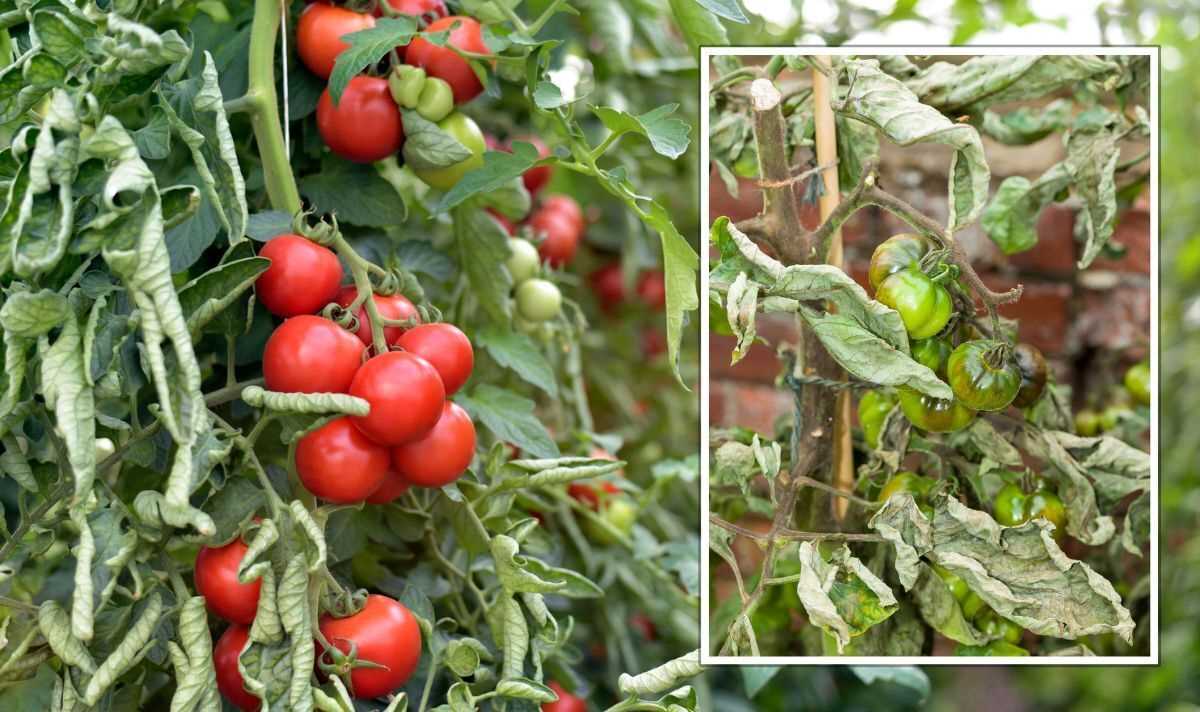
One of the biggest challenges in growing healthy tomato plants is managing pests and diseases. These can have a detrimental effect on the growth and productivity of your plants if not properly controlled. Here are some expert tips on how to manage pest and disease control for your tomato plants:
- Regularly inspect your plants: Make it a habit to regularly inspect your tomato plants for any signs of pest infestation or disease. Look for insects, eggs, larvae, and any unusual discoloration or spots on the leaves or fruits.
- Identify common pests and diseases: Familiarize yourself with the common pests and diseases that affect tomato plants, such as aphids, whiteflies, tomato hornworms, powdery mildew, and early blight. This knowledge will help you identify the specific problems and take appropriate action.
- Practice good hygiene: Maintain good hygiene around your tomato plants by clearing away fallen leaves or plant debris, which can harbor pests and diseases. Also, wash your hands and tools before working with your plants to prevent the spread of any contaminants.
- Use organic pest control methods: Consider using organic methods to control pests and diseases, such as planting companion plants that repel insects, applying neem oil or insecticidal soap, and attracting beneficial insects that prey on pests.
- Rotate your crops: To prevent the buildup of pests and diseases in the soil, practice crop rotation by planting your tomatoes in a different location each year. This will disrupt the life cycle of pests and help maintain healthier plants.
- Monitor moisture levels: Proper watering is essential for the health of your tomato plants. Avoid overwatering, as this can create a favorable environment for certain diseases. Opt for watering at the base of the plants and avoid wetting the leaves excessively.
By following these pest and disease control practices, you can significantly improve the health and productivity of your tomato plants. Regular monitoring, proper hygiene, and the use of organic methods will help ensure that your plants remain strong and resilient against common pests and diseases.
Step 5: Harvesting and Storing Tomatoes for Optimal Flavor
One of the most rewarding moments in gardening is harvesting your homegrown tomatoes. After putting in all the effort to grow healthy and productive tomato bushes, it’s important to know how to harvest and store the fruits to preserve their optimal flavor. Here are some expert tips for harvesting and storing tomatoes:
1. Harvesting:
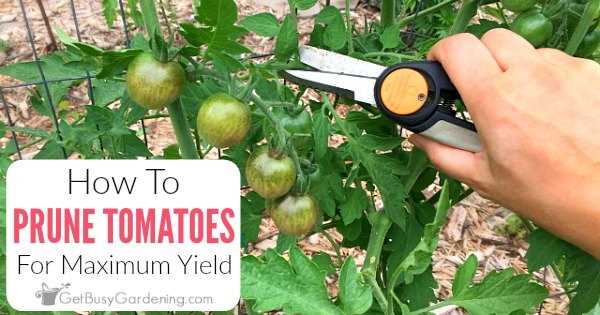
– Tomatoes should be harvested when they are fully ripe but still firm. Look for fruits with vibrant color and a slight give when gently squeezed.
– To avoid damaging the vines, use a sharp pair of pruning shears or garden scissors to cut the tomatoes from the stem, leaving a short stem attached to the fruit.
– Harvest tomatoes in the early morning when they are coolest to ensure maximum freshness and flavor.
2. Cleaning:
– After harvesting, gently wash the tomatoes with cool water to remove any dirt or debris. Avoid using soap or harsh detergents as they can affect the taste and quality of the tomatoes.
– Use a clean towel or paper towel to pat dry the tomatoes before proceeding to the next step.
3. Storage:
– For short-term storage, place the tomatoes in a single layer in a cool, well-ventilated area away from direct sunlight. A countertop or pantry shelf works well for this purpose.
– If you have a large harvest and need to store tomatoes for a longer period, you can consider different methods:
- – Refrigerator storage: Wrap each tomato individually in a paper towel and store them in a clear plastic bag in the refrigerator. This method can help prolong the freshness of the tomatoes for up to two weeks, but note that refrigeration can affect the flavor and texture.
- – Freezing: Tomatoes can be frozen whole or chopped. If freezing whole, blanch the tomatoes in boiling water for a few seconds, then transfer them to an ice bath. Remove the skins, place the tomatoes in freezer bags, and remove any excess air before sealing. Chopped tomatoes can be frozen directly in freezer bags or containers.
- – Canning: Canning tomatoes allows for long-term storage and is a popular method for preserving large harvests. Follow proper canning procedures to ensure safety and quality.
4. Ripening Green Tomatoes:
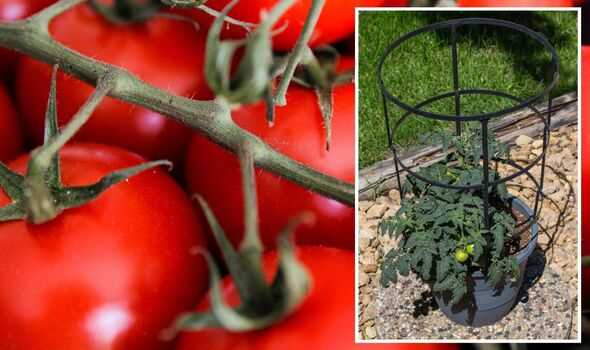
– If you have harvested green tomatoes towards the end of the growing season, you can ripen them indoors. Place the unripe tomatoes in a single layer in a dark, cool area with temperatures around 65-70°F (18-21°C). Check them regularly and remove any tomatoes that show signs of rotting to prevent spoilage.
5. Enjoying your Tomatoes:
– Once your tomatoes are ripe and ready to be enjoyed, wash them again before eating or using in recipes. Remove any stems or leaves, and savor the fresh, juicy flavor of your homegrown tomatoes!
By following these tips, you can ensure that your harvested tomatoes retain their optimal flavor and can be enjoyed for an extended period. Whether you choose to eat them fresh, freeze, or can them, your homegrown tomatoes will be a delicious treat throughout the year.
Expert Tips for Preventing Tomato Fatness and Promoting Growth
1. Proper Planting Techniques
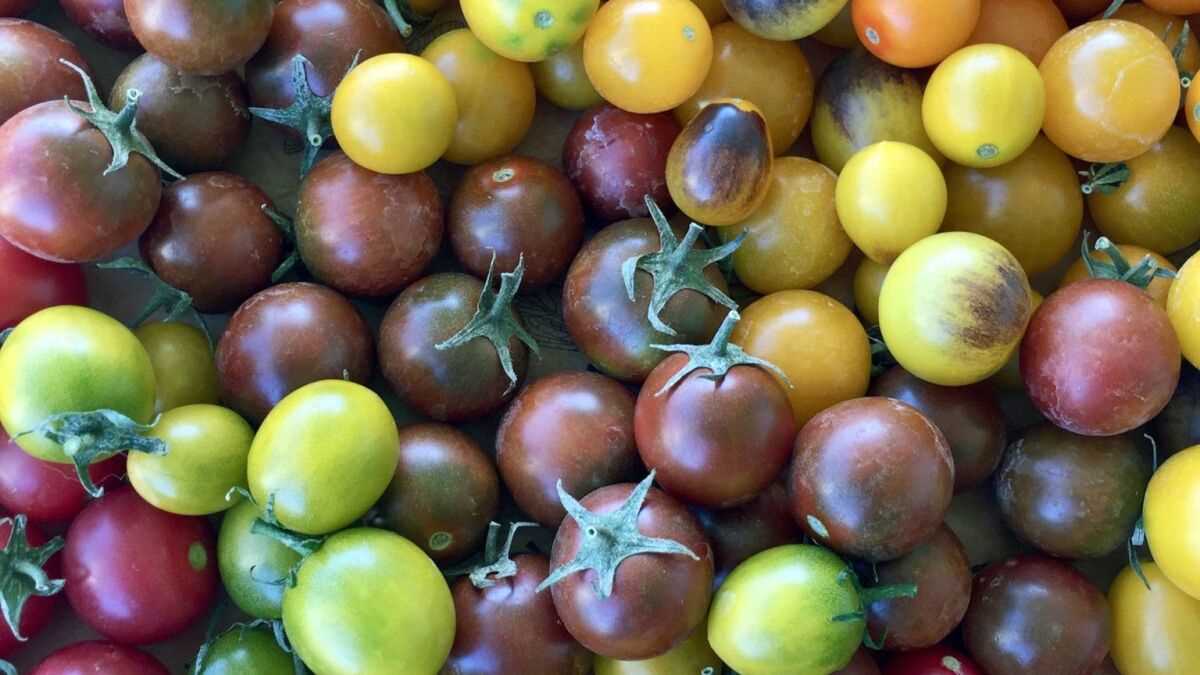
When planting tomato bushes, it is important to dig a hole that is deep enough to accommodate the roots of the plant. The hole should also be wide enough to allow for the proper spread of the roots. Plant the tomato bush slightly below the soil level to encourage the growth of additional roots along the stem.
2. Adequate Spacing
Tomato plants need enough space to grow and receive proper airflow. Make sure to space out the tomato bushes according to the recommended distance for the specific variety being grown. This will prevent overcrowding and reduce the risk of tomato fatness.
3. Proper Watering Techniques
Provide sufficient water to tomato plants, ensuring that the soil is consistently moist but not waterlogged. Overwatering can lead to nutrient leaching and increased susceptibility to diseases. Aim to water the plants deeply and infrequently, allowing the top layer of soil to dry out between waterings.
4. Nutrient Management
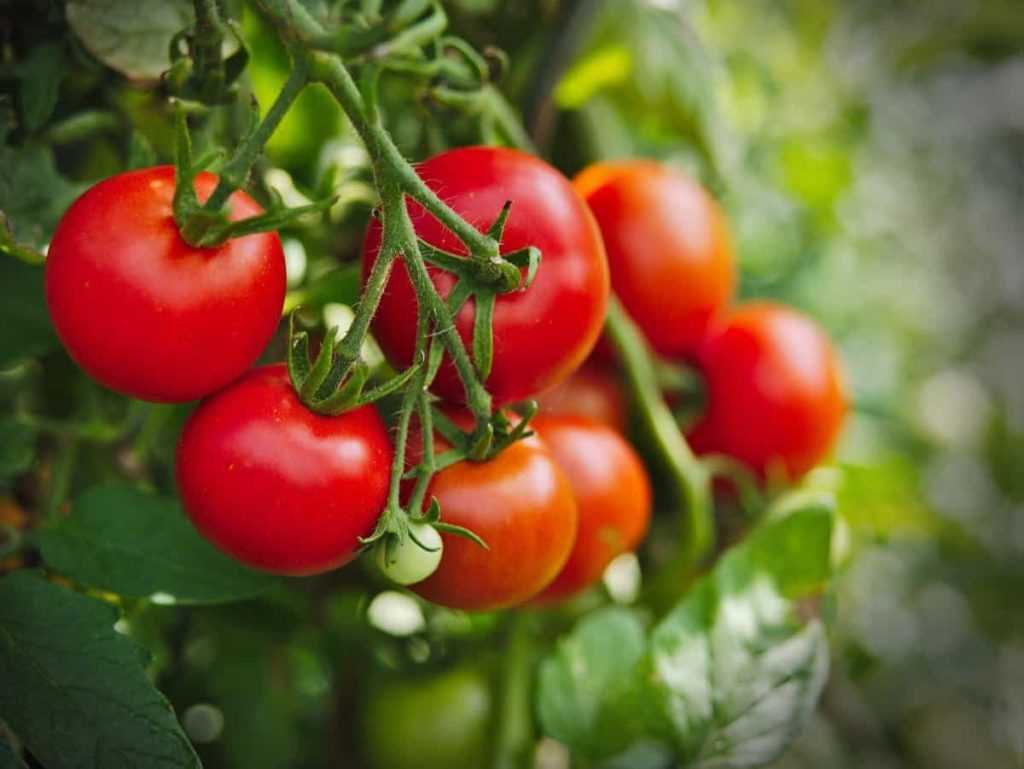
Tomato plants require a balanced supply of nutrients for optimal growth. Regularly apply a balanced fertilizer according to the recommended dosage for tomatoes. Maintain proper soil pH levels and monitor nutrient deficiencies to address them promptly. Avoid excessive use of nitrogen-rich fertilizers, as they can promote vegetative growth at the expense of fruit production.
5. Pruning and Training
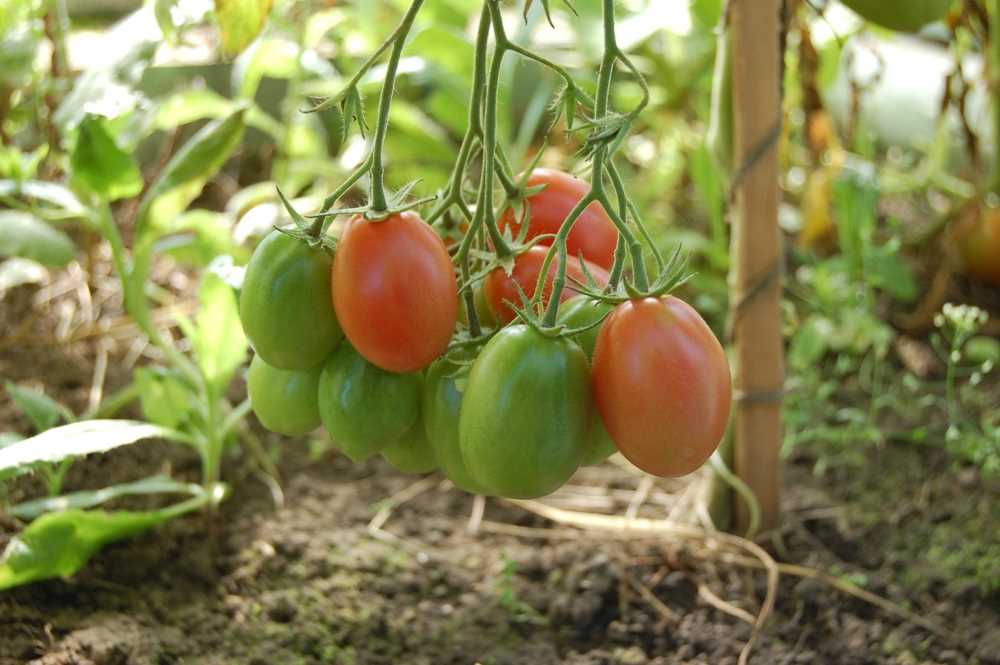
Prune the tomato plants regularly to remove any suckers and lower branches. This will allow better airflow and reduce the risk of disease. Additionally, consider using tomato cages or trellises to support the plants and promote upward growth. Properly training the plants will help prevent sprawling and promote better fruit development.
| Step | Technique |
|---|---|
| 1 | Proper Planting Techniques |
| 2 | Adequate Spacing |
| 3 | Proper Watering Techniques |
| 4 | Nutrient Management |
| 5 | Pruning and Training |
Note: Following these expert tips will help prevent tomato fatness and promote healthy growth in tomato plants. By implementing these techniques, you can enjoy a bountiful harvest of delicious tomatoes.
“Question-Answer”
What is tomato fatness and why is it a problem?
Tomato fatness refers to the overgrowth and excessive development of the tomato bush, resulting in little or no fruit production. It is a problem because it can lead to wasted resources, such as water and nutrients, and can also limit the overall yield of tomatoes.
What are the symptoms of tomato fatness?
Symptoms of tomato fatness include vigorous vegetative growth, lack of flowering, excessive branching, and a decrease in fruit production. The tomato plant may also become overcrowded and have a dense canopy.
How can I prevent tomato fatness?
To prevent tomato fatness, it is important to provide proper plant spacing, regular pruning, and adequate nutrient management. It is also helpful to choose tomato varieties that are less prone to excessive growth.
What is the recommended spacing for tomato plants?
The recommended spacing for tomato plants is typically 2-3 feet apart in rows, with 3-4 feet between rows. This allows enough room for air circulation and prevents overcrowding, which can contribute to tomato fatness.
How often should I prune my tomato plants?
Tomato plants should be pruned regularly, about once every 1-2 weeks, depending on their growth rate. This helps to remove excessive vegetative growth and allows the plant to focus its energy on fruit production.
Are there any specific nutrients that can help prevent tomato fatness?
Yes, ensuring a balanced supply of nutrients is crucial for preventing tomato fatness. Adequate levels of potassium and phosphorus, along with a moderate amount of nitrogen, can help promote healthy fruit development and prevent excessive vegetative growth.







